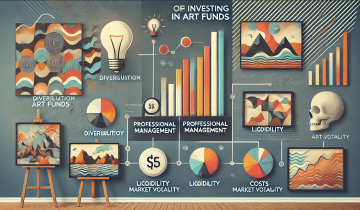In Reshaping Art Auction Market, The coronavirus pandemic poses a huge global challenge to auction houses large and small, but those that have embraced technology could prosper as nervous investors seek a safe haven, according to experts.
Major London-based house Sotheby’s has closed its London, Hong Kong, Dubai, Geneva, Milan, Paris and New York offices, throwing their marquee May auctions into doubt.
Main rival Christie’s, meanwhile, said it was “working swiftly” to reschedule postponed auctions.
“It’s a threat to all of us, but I do think we’ll get through it,” Giles Peppiatt, director for modern and contemporary African art at fellow London-based auction giant Bonhams, told AFP.
Although no longer able to hold live auctions, the pandemic has accelerated the move to online sales.
“We thank our stars that we have online bidding,” said Peppiatt.
“When online sales first started, all the auctioneers thought it would suck the life out of the auctions.
“But it’s amazing that the thing we feared most at the time is probably going to be our saviour.”
Jen Zatorski, president of Christie’s America, told a media conference call that the company had responded by accelerating the reprogramming of its online sale platform using its own technology developed over the last decade.
“The art market and our clients are ready and wishing for this type of digital engagement and transaction,” she explained.

‘Defining moment’
The outbreak poses different challenges for various sized auction houses, and for different segments of the market, experts said.
“I think small auction houses… will really struggle through this because they just don’t have the… liquidity to ride it out,” Clare McAndrew, CEO of Arts Economics, told AFP.
But Pierce Noonan, the chairman and CEO of London-based auction house Dix Noonan Webb, said that nimble smaller firms could thrive.
“Number one: It’s going to be technology,” he said. “This is a defining moment.”
His house, which specialises in small collectibles such as watches and jewellery, is planning to hold a live online sale next week, with the auctioneer presiding from home, if necessary.
A cut of the proceeds will go to Britain’s National Health Service.
“Our website traffic, it’s never been busier,” he added, explaining that people were stuck at home with little else to spend their money on.
‘Art survives’
Having tangible assets could also become more attractive as other investment options collapse.
A “sad truth is that art survives disaster,” art economics expert Kathryn Brown, from Britain’s Loughborough University, told AFP.
“People continued to buy art during the First World War. You can look at the correspondence between the poet Guillaume Apollinaire, writing from the trenches to a dealer in Paris, telling him what art to buy.”
Christie’s president Jussi Pylkkanen said they had not experienced “falling appetite from our buyers.”
A bigger issue could be supply, explained McAndrew.
“The problem is people might perceive it as a poor time to sell.”
So those in search of a cut-price Picasso could be disappointed.
“This idea of panic offers is a little bit rubbish,” she said. “They tend to sell from the bottom of the pile.”
This seemed to be borne out by Christie’s US chairman Marc Porter, who explained that “we have not seen, yet, people who need to raise capital immediately”.
‘Heat of the moment’
The outbreak could hit different parts of the market more harshly, believes Peppiatt.
“It’s the areas where the market money… is a little bit more ‘hot’ — in the sense this is a bit more speculation — that could be a bit more vulnerable,” he said, pointing to the mainstream contemporary market.
Live auctions could even shift to Asia as it eases lockdowns.
“As long as all the correct people have been made aware and all the correct people have seen the works, you should get pretty much the same price,” he said.
Despite shifting business online and the creation of virtual galleries, there will still be a crucial role for live auctions after the dust settles, according to the experts.
“There’s no doubt also that with a live auction, buyers tend to bid a bit more freely because they get wrapped up in the auction, in the heat of the moment, the drama, the theatre,” said Peppiatt.
“I think for major works of art — when you’re talking over £100,000 ($120,000) — people do like to try to get in front of the picture themselves.”





 No products in the basket.
No products in the basket.